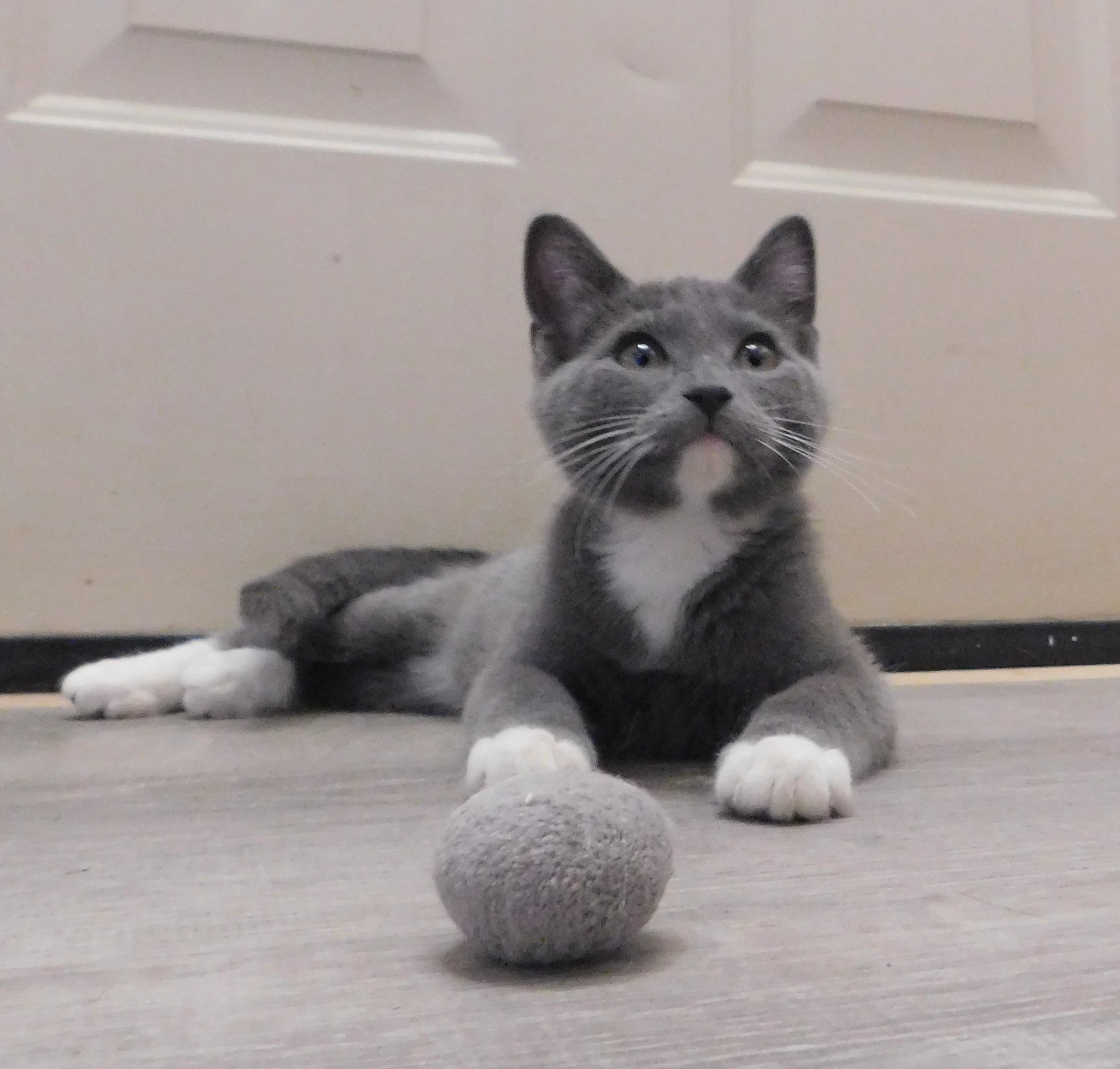
11 Sep Second Chance: How Much Petting is Too Much Petting?
Second Chance Humane Society’s Animal Resource Center and Thrift Shops have been servicing San Miguel, Ouray & Montrose Counties for 25 years. Call the Second Chance Helpline at 626-2273 to report a lost pet, learn about adopting a homeless pet, or about Spay/Neuter, Volunteer, Feral Cat, or other services. View the shelter pets and services online: www.adoptmountainpets.org.

Jolly
You know how your cat is being all lovey dovey drunk and giving you all the signals to pet her and she is purring and rubbing on you letting you know how wonderful you are? And then in the blink of an eye she is sinking her teeth into your hand? Well, that is normal. But I can tell you why it is normal and how to avoid the little “love nibbles” in the future. Please note, just because I am writing this does not mean that I condone or participate in such behavior.
Let’s begin with a quick review of Cats 101. We (typically) are simply not as social as dogs, nor require as much physical contact with anyone or anything. Although we do have social needs and enjoy grooming and sleeping adjacent or nearby other furry and non-furry family members, we find petting to be outside normal instinctive behavior.
Of course you linear thinking humans have posed many theories regarding “petting induced overstimulation” (yep you even made up a name for it) involving: a sensitivity threshold (in which the repetitiveness of petting becomes irritating); a potentially painful medical condition (true for some cats); or that we are simply control freaks that like to dictate when the petting starts and stops (also true for some cats).
The reality is that a majority of cats exhibit petting-induced overstimulation to some degree, our hair follicle receptors can only take so much petting before it suddenly hurts, so learning your cat’s tolerance level is important. Equally important is knowing the number and intensity of warning signals provided before an aggressive reaction is needed (when those warning signals are neglected or ignored).
Begin by keeping your petting sessions short and specific to the areas your cat truly enjoys your touch. If you find your cat gets overstimulated after two minutes of petting, then only pet for one minute and give it a break. Cats almost always give warning signals before biting or scratching. These signs can be subtle at first: tail swishing or flicking, skin twitching, flattening the ears, freezing, tenseness or staring, pupillary dilation, or a low growl.
Some cats simply like to rub on an offered hand, or prefer to be scratched under the chin or between the ears, but do not appreciate long strokes over their bodies. Others may enjoy human closeness ,(sitting on your lap), but not necessarily human-initiated contact. Understand that you will not be able to change the basic personality of your cat and need to accept them as they are.
Most importantly, punishment is not the way to respond. It will not make your cat more comfortable with handling or less aggressive. Yelling at or hitting your cat will only make your cat fear you or become more aggressive. And it is just mean.
My name is Joyful Jumping & Jamming JimBob, but they call me Jolly. I am a four-month-young adoptable boy kitty. My siblings and I were brought to Second Chance after being abandoned in a barn with our mom and, after some great Second Chance TLC, we all are ready for our forever homes.
I am a playful and cuddly boy, who is delighted to be alive and ready to conquer the world – with you…


Sorry, the comment form is closed at this time.